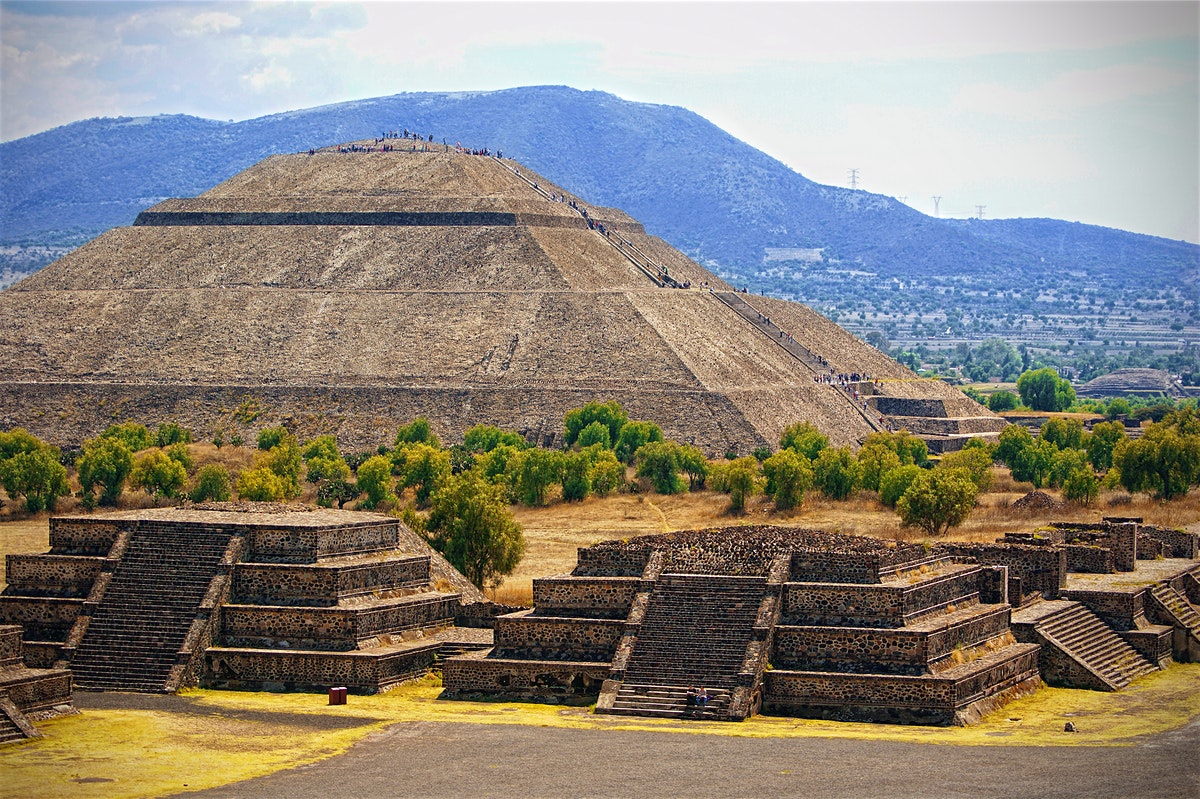A group of archaeologists discovered remains of a mural and other materials in the Plaza de las Columnas, which indicate that the elite of the Maya civilization resided in the pre-Hispanic city of Teotihuacán, in the northeast of Mexico City.
The materials, which include fragments of Maya pottery, a rich offering of consecration and a deposit made up of thousands of human bone remains of sacrificed individuals, were found in that area, between the pyramids of the Sun and the Moon, west of the Calzada de los Muertos.
The National Institute of Anthropology (INAH) noted that these findings confirm the relationship between the two cultures that were geographically separated by 1,300 kilometers.
“Epigraphic texts located in cities such as Tikal, in the Guatemalan Petén, refer to the contact that both cultures maintained towards the 4th century of our era”.

City of the Gods
“However, little evidence had been found in the great metropolis of the Mexican Altiplano, until today, where new findings point to the residence of the Maya elite in the also known as the “City of the Gods,” the INAH statement said.
The team of archaeologists led by Doctors Saburo Sugiyama, Veronica Ortega Cabrera, Nawa Sugiyama and William Fash started from the hypothesis of its importance for the political organization of Teotihuacán, to the extent that activities were developed for its control.
The Plaza de las Columnas Project began four years ago with the idea of exploring the fourth largest architectural complex of the pre-Hispanic metropolis, after the sets of the Pyramids of the Sun and the Moon, as well as La Ciudadela.
“Through the excavation of wells, in addition to the outline of a tunnel, it was determined that the structures of the Plaza de las Columnas was used for administrative, ceremonial and probably as the residence of an elite group, tht not only belong to the Teotihuacanos, but apparently also to the Maya, at least around the year 350 AC, when both dominated the Mesoamerican region, during the Classic period,” the INAH statement continued.
Revealing discovery
One of the most revealing findings occurred in 2016, when more than 500 fragments of mural painting were rescued in the north part of the northern mound, many of which stand out for their Maya style.
The archeologist Saburo Sugiyama, who has worked for the past 38 years in Teotihuacán, said that the previous discovery in the Pyramid of the Moon of sacrificed individuals accompanied by Maya-style green stone earrings pointed out to an evident relationship of both cultures.
“The remains of the mural painting in the Plaza de las Columnas allow us to affirm the presence of the Maya elites in Teotihuacán, and that this was not periodic or just with ritual purposes, but permanent,” Sugiyama added.
“It is likely that the artists who made these murals and the highest-ranking Mayan officials resided in a building north of that mound,” the expert continued.
“Although the fragments of the mural have not been reconstructed, a wide range of colors (white, red, ocher, green, among others) can still be identified, including small human figurines similar to those seen in the murals of the Teotihuacan neighborhood of Tetitla”.
“However, due to the presence of Maya glyphs, the fluid style that domains the line and its naturalism are the work of artists “who knew perfectly well the iconography of the Lowlands of the Maya South”.
“Because of the location of these finds, in the central area of the ancient city of Teotihuacán, we believe they were part of a building where the state coordinated interactions with the Maya elites, or where the Maya intervened in ritual or administrative matters,” the researcher at the Arizona State University.
The Plaza de las Columnas Project tries to clear up mysteries about the origin of Teotihuacán’s urbanism, the formation and transformation of a city that maintains diverse types of multi-ethnic relationships.
TYT Newsroom with information from yucatan.com.mx


